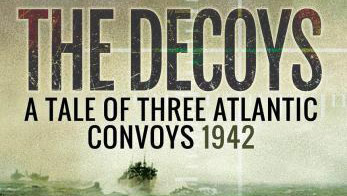
Bernard Edwards is a singular and important author because of his expertise. He had a long career in the merchant navy and commanded ships on all the seas of the world. After nearly forty years of sailing, ‘Captain Edwards’ settled in a small village in the South Wales countryside to begin a second career as a writer. His extensive knowledge of the sea and of ships has resulted in many well researched yet accessible books that have received international recognition. Bernard Edwards has written many books on the convoys of the Second World War. One of the most important is undoubtedly “The decoys”. According to B. Edwards, several convoys were used as decoys and launched in front of German submarines to allow the landing of November 1942. The book tells in a very precise way the complex organization of the operation Torch. The author explains that to transport 100,000 soldiers and their equipment, 350 merchant ships crossing the U-boat-infested North Atlantic from the United States and another 250 sailing south from British ports were needed. The need for a high level of protection for these ships means, above all, the removal of a large number of escorts from routine commercial convoys. According to B. Edwards, among the ships left without adequate defence were those of convoys RB 1 and SC 107, both from America, and SL 125, from Freetown. These three convoys were at sea at the same time as the TORCH convoys. Predictably, Admiral Donitz threw the full weight of his fleet of 140 U-boats against the now highly vulnerable Atlantic trade convoys. Bernard Edwards’ demonstration of the RB 1 convoy is quite convincing. Codenamed Operation Maniac, this RB 1 convoy left Newfoundland on 21 September for England. Composed of eight steamers modified to resemble freighters and filled with ballast, the convoy was escorted by four destroyers dating from the First World War. RB-1 succeeded in luring 17 U-Boats well north of the Operation Torch convoy’s route. Attacked less than a week after departure, four of the liners and one destroyer were torpedoed and sunk. The German submarines returned to their base or headed for the North Atlantic where another Allied convoy was waiting. During the attack on RB 1, they did not see the flotillas circulating between Scotland and Newfoundland in preparation for Operation Torch.
In total, RB 1, SC 107 and SL 125 lost 31 ships and 792 men. While this unprecedented massacre was taking place, the troop convoys passed through without incident, as if by miracle. Bernard Edwards points out that there is no evidence that the ships of the three convoys were sacrificed to ensure the passage of the TORCH convoys, but this thoroughly researched book sets out to examine the truth behind the rumours.

